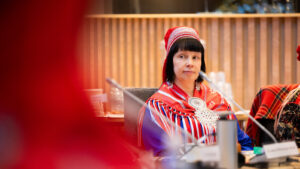Mark Twain wrote that “Man is the only animal that blushes – or should”. However, new research appears to prove him wrong with the discovery that hens have the ability to blush and use other forms of facial expression.
Researchers in France found that female chickens appear to blush when they are scared or excited and fluff up their head feathers when they are content. The finding offers a new way to understand the birds’ emotions, which could help farmers assess the happiness of their flock.
Facial expressions are an important method by which humans communicate emotions, and research has shown that other mammals – including mice, dogs, cats and pigs – use them to varying degrees. Aline Bertin, a senior author of the latest study at the French National Research Institute for Agriculture, Food and Environment, said she hoped the research would provide similar insights about birds.
“The emotional world of birds remains largely unexplored compared to that of mammals,” she said. “We aimed to determine whether facial markers of emotions can also be detected in birds, with the ultimate goal of better understanding and taking into account their emotional capacities.”
In the study, published in Plos One, researchers filmed the behavior of two groups of hens – 10 raised on a commercial farm and eight kept by a private breeder – during situations that elicited different emotional responses and levels of arousal. For example, being rewarded with food was seen as positive and stimulating, while being picked up and held by an experimenter was associated with excitement but fear.
Analyzing the footage, the team found that the exposed skin on the hens’ faces turned red when they were scared or animated, such as when they were picked up by a human or heard a sound they perceived as a threat. experience. The birds also tended to peak their head feathers when they were relaxed, such as when they were grooming themselves or resting.
There are few ways to reliably evaluate bird emotions and this is the first time that blushing has been linked to hens’ moods. The authors suggest that farmers hoping to improve the well-being of their flock may want to aim for the relaxed, happy state indicated by low redness and pointed head feathers.
Dr Paul Rose, who studies animal behavior at the University of Exeter, said the findings could lead to happier hens. “To improve how we assess animal welfare in industry, quick, easy and reliable indicators are key,” he said. “The authors seem to have discovered some, particularly with the feather fluff, that I think would be easy for animal care professionals or farmers to observe and identify as something that might suggest their birds are content.”




